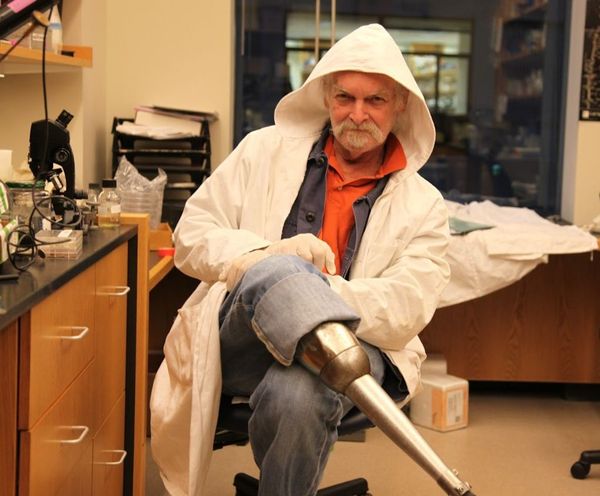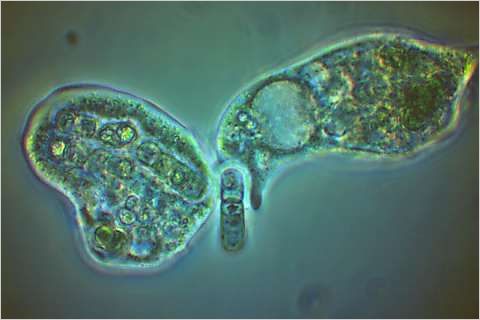 No one better exemplifies the promise and excitement of STEM to STEAM than MIT’s unofficial artist in residence, Joe Davis. Davis’ contagious brilliance has inspired some of the world’s leading scientists to help build his outlandish ideas, from fishing rigs designed to catch microorganisms to ornithopters powered by frog legs.
No one better exemplifies the promise and excitement of STEM to STEAM than MIT’s unofficial artist in residence, Joe Davis. Davis’ contagious brilliance has inspired some of the world’s leading scientists to help build his outlandish ideas, from fishing rigs designed to catch microorganisms to ornithopters powered by frog legs.
 Combined with his rigorous understanding of scientific principles and advancements, Davis’s lateral thinking has at times put him decades ahead of mainstream scientists in discovering new uses for technology. His 1988 project embedding a visual image in DNA predated the recently publicized demonstration by Harvard researcher George Church by 24 years.
Combined with his rigorous understanding of scientific principles and advancements, Davis’s lateral thinking has at times put him decades ahead of mainstream scientists in discovering new uses for technology. His 1988 project embedding a visual image in DNA predated the recently publicized demonstration by Harvard researcher George Church by 24 years.
 Other inventions of Davis’s have yet to find a scientific application. His Audio Microscope, a microscope that translates light information into sound, thus allowing you to hear the acoustic signature of living cells, might be someday used to identify abnormal cells such as cancer cells. Other experiments, such as learning how E. coli responds to jazz or beaming images into space via radio telescope, may never find a practical application yet are thought-provoking in their juxtaposition of human and bacterial cultures.
Other inventions of Davis’s have yet to find a scientific application. His Audio Microscope, a microscope that translates light information into sound, thus allowing you to hear the acoustic signature of living cells, might be someday used to identify abnormal cells such as cancer cells. Other experiments, such as learning how E. coli responds to jazz or beaming images into space via radio telescope, may never find a practical application yet are thought-provoking in their juxtaposition of human and bacterial cultures.
At Digital Humanities Week, Davis gives a talk about his latest research on the frontiers of art and science, as well as conducting a workshop on building your own DIY scientific instruments for artistic or scientific ends.
